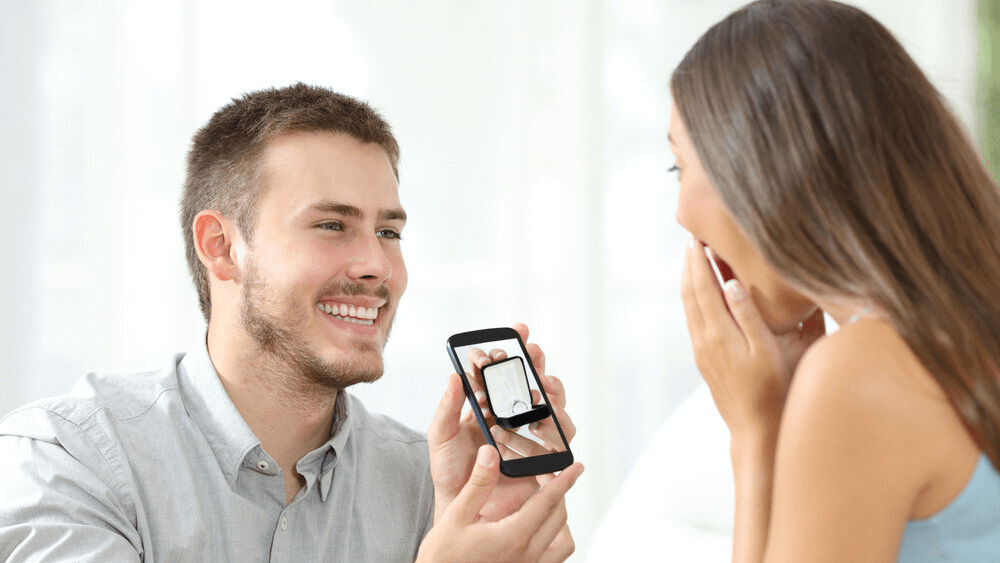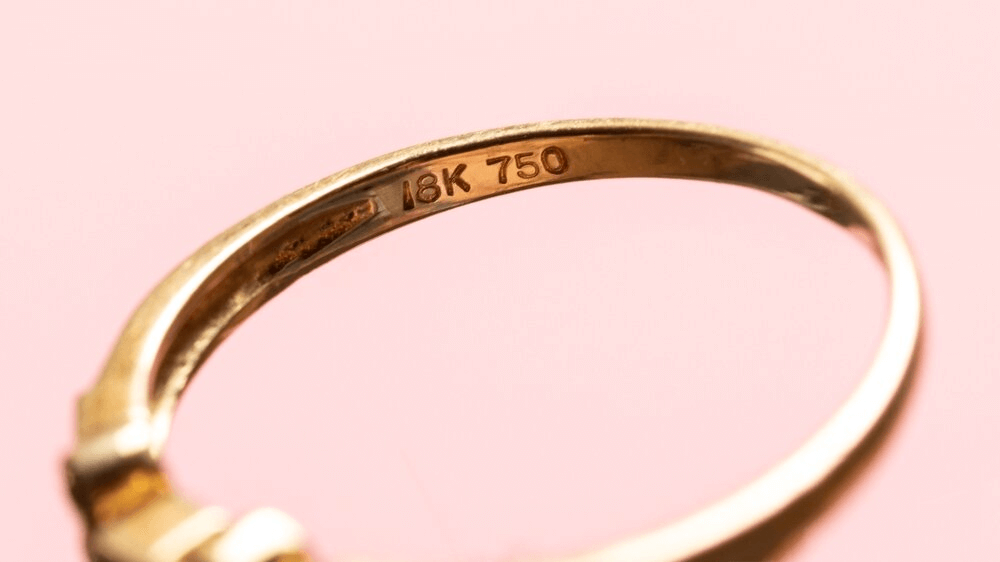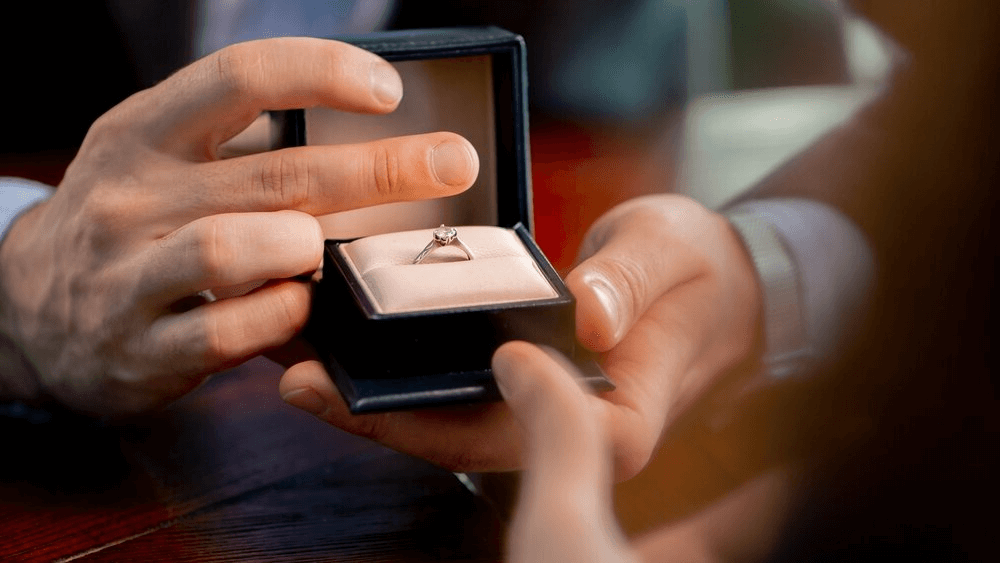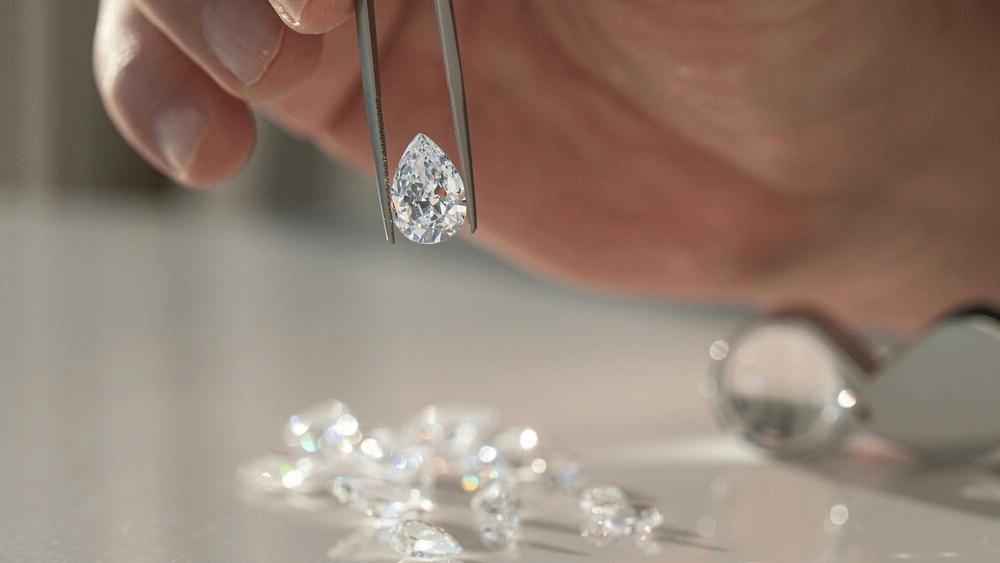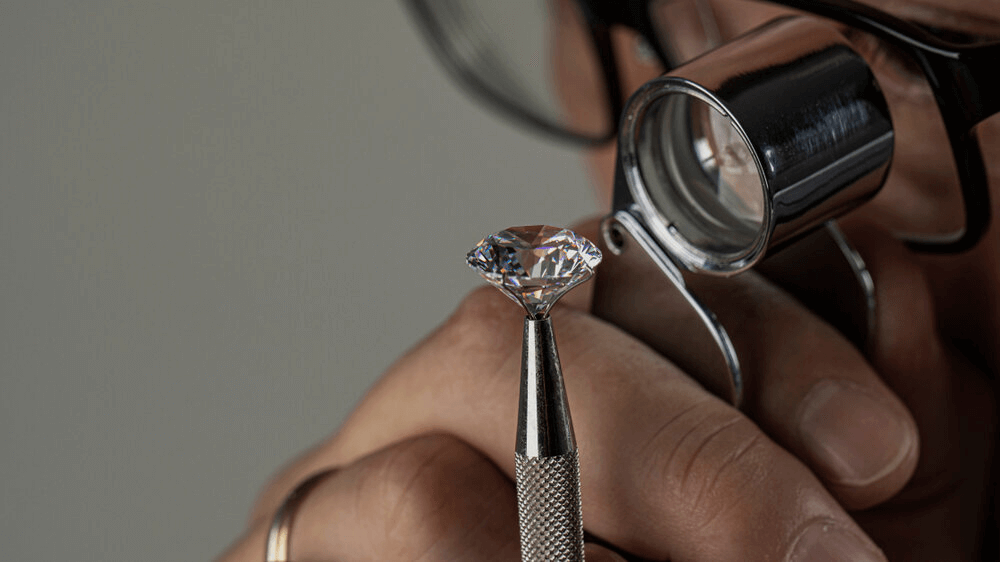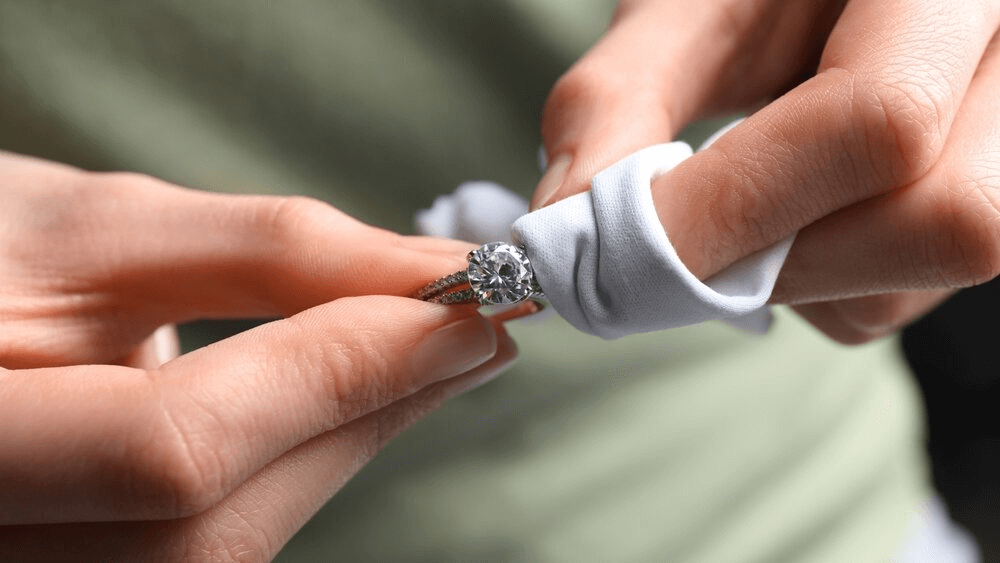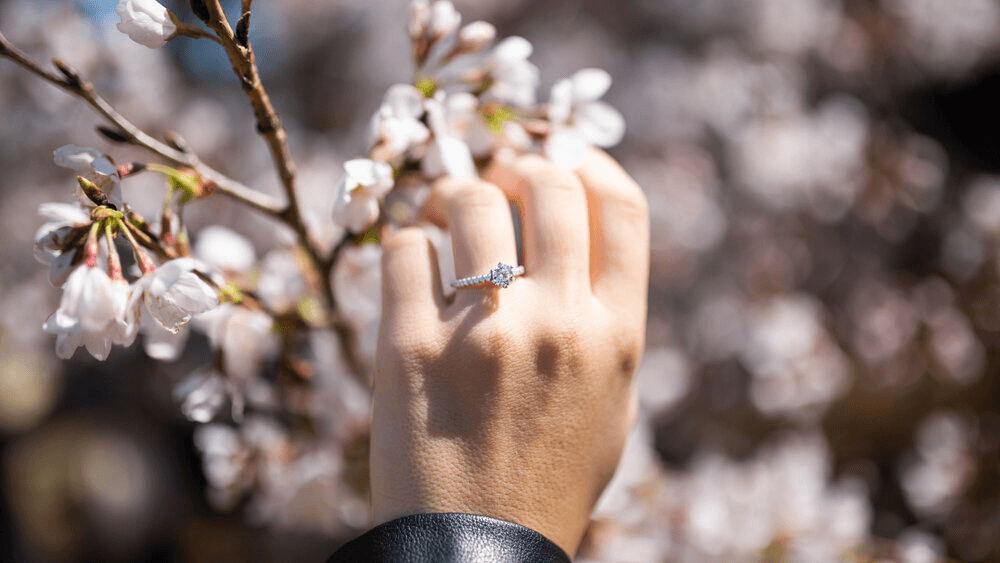Shocking Engagement Ring Statistics You Should Know

By Gary A.

Edited by Olivia H.
Published Mar 17, 2022
Edited on Mar 31, 2025
When it comes to making the big decision, understanding engagement ring sales statistics can offer valuable insights into trends, prices, and popular choices, helping you find the perfect ring without the guesswork.

- Engagement Ring Statistics: 7 Quick Tips for Buyers
- Introduction
- Global Engagement Ring Spending
- the True Cost of a Diamond
- Record-Breaking Ring Sales
- Choosing the Right Diamond Quality
- The Allure of Diamond Shapes
- Origin and Ethical Sourcing
- Proposal Planning Insights
- 9 FAQs
Before we dive deeper into the specifics, here are some practical tips to help guide your decision-making process:
Engagement Ring Statistics: 7 Quick Tips for Buyers
When delving into the world of engagement rings, it’s essential to understand the statistics and trends that shape the market. Here are practical tips based on engagement ring statistics that every buyer should consider:
- Tip 1:Understand the Average Spending: One of the most critical statistics to be aware of is the average amount spent on engagement rings. In the US, this figure hovers around $6,000, but it varies globally. Knowing this average helps set a realistic budget and expectations. It’s crucial not to feel pressured to exceed this amount if it doesn’t align with your financial situation.
- Tip 2:Consider the Popular Diamond Sizes: The average diamond size for engagement rings in the US is about 1 carat. However, this varies based on geographical location and personal preference. Understanding the average sizes can guide you in selecting a diamond that aligns with common choices while still fitting your personal taste and budget.
- Tip 3:Pay Attention to Diamond Quality Preferences: Statistics show that G and H color grades and VS2 and SI1 clarity grades are among the most popular choices. These grades offer a balance between visible imperfections and overall aesthetic appeal, providing excellent value for money.
- Tip 4:Choose the Right Diamond Shape: The Round Brilliant cut is statistically the most popular diamond shape due to its timeless appeal and exceptional sparkle. However, your choice should also consider personal preference and style. Other shapes like Princess, Oval, or Cushion cuts are also worth exploring.
- Tip 5:Evaluate the Impact of Carat Weight on Price: Larger diamonds exponentially increase in price, not just in size. Understanding this can help you balance the desire for a larger stone with the reality of its cost. Remember, a slightly smaller diamond with higher quality cuts and clarity can often be more appealing than a larger stone of lower quality.
- Tip 6:Examine Current Market Trends and Styles: Staying informed about the latest trends in engagement rings, including popular styles for the current year, can provide valuable insight. This awareness can help you choose a ring that is not only beautiful but also contemporary and stylish.
- Tip 7:Be Mindful of Ethical Sourcing and Sustainability: Awareness of diamond origins and ethical sourcing is increasingly important. Look for diamonds certified under the Kimberley Process to ensure they are conflict-free. Additionally, consider the growing market for lab-grown diamonds, which offer an ethical and often more affordable alternative to natural stones.
Now that you’ve got these practical tips, use Jeweler AI below to find the perfect engagement ring that suits your style and budget:
Introduction
Here’s something no one warned you about when you first let your closest confidantes in on your plans to propose: buying an engagement ring naturally means a certain amount of ‘peeping over the garden fence’, so to speak, and trying to work out what everything else is doing.
And why not? For someone who hasn’t put much – if any – thought into engagement rings, diamonds, proposals, jewelers, and carats ever before, it’s only natural. It’s like being handed a test you haven’t studied for, and that feeling of wanting to peer around at everyone else for some sign that they’re as bewildered as you.
The only difference is, this time around, you’re not trying to impress the teacher – you’re working to impress your partner, all of their expectations, and those of every friend, family member, coworker and stranger who catches a long glimpse at the ring from here to, well…ever after.

Introduction
We can talk about halos, cathedrals, peekaboos, and paves until you could pretty much do our job for us, but, even then, there will always be an element of wanting to side-eye your neighbor’s test paper.
In other words, you want to know what’s going on outside your bubble. What are the expectations for money, size, sparkle, and color? Where is everyone else shopping? Where are people sourcing their diamonds from? Here are the top engagement ring statistics and facts every shopper needs to know.
Global Engagement Ring Spending
Plenty of people will tell you it doesn’t matter what you spend – all that matters is that you’re the guy proposing, and she’s the one saying yes – and it’s true. Engagement ring budgets come in all sizes – some average, some below average, and others that are pretty much capable of buying out an entire jewelry store.
US vs. UK: A Comparative Glance at Engagement Ring Statistics
The Average Cost of an Engagement Ring in the US is around $6,000. It should come as no big surprise. In our guide to the cost of 1 carat engagement rings, we talk about how a beautiful, eye clean, 1 carat Solitaire engagement ring will typically cost a savvy buyer between $6,000 and $8,000, which corresponds pretty perfectly with these statistics.
In the UK, the average is a little lower – somewhere between £1,800 and £2,100, with the averages in big cities like London being a lot higher than they are elsewhere.
In fact, the US has the highest national average spend for engagement rings compared to anywhere else in the world.
the True Cost of a Diamond
Diamonds are incredibly valuable, but what does that really mean for your bank balance?
Understanding Price Ranges
The Average Cost of a 1 Carat Diamond Typically Falls Between $2,500 and $18,000.
Cut, Color, Clarity, and other features like Fluorescence and proportion, all influence a diamond’s value significantly. Shoppers will want to avoid diamonds that fall too far below the $6,000 mark.
Nevertheless, diamond prices can range from a couple hundred dollars (don’t get your hopes up) to millions of dollars.
The Exponential Curve of Diamond Value
Value Increases exponentially with carat weight. Don’t fool yourself into thinking a 1.5 carat will simply cost 50% more than a 1 carat diamond, or that a 2 carat diamond will cost twice as much. Larger diamonds will always be coveted highly by shoppers, so it’s only inevitable that they cost considerably more the larger and weightier they get. Learning about diamond prices is a pretty eye opening experience if you’ve never thought about it before now.
Men’s Focus on Finances
In general, men are more preoccupied by cost than women.
Cost is a great weight to gauge the beauty and impact a ring might have on your partner but, by comparison, women are far more interested in the ring’s overall design, and the size of the diamond. So, while it’s a great idea to get your head around diamond value, don’t worry about channeling all your energy into the numbers.
Then again, if you’re approaching your proposal the traditional way, it’s only natural men focus more on the money since they’re the ones who are going to be paying the bill…
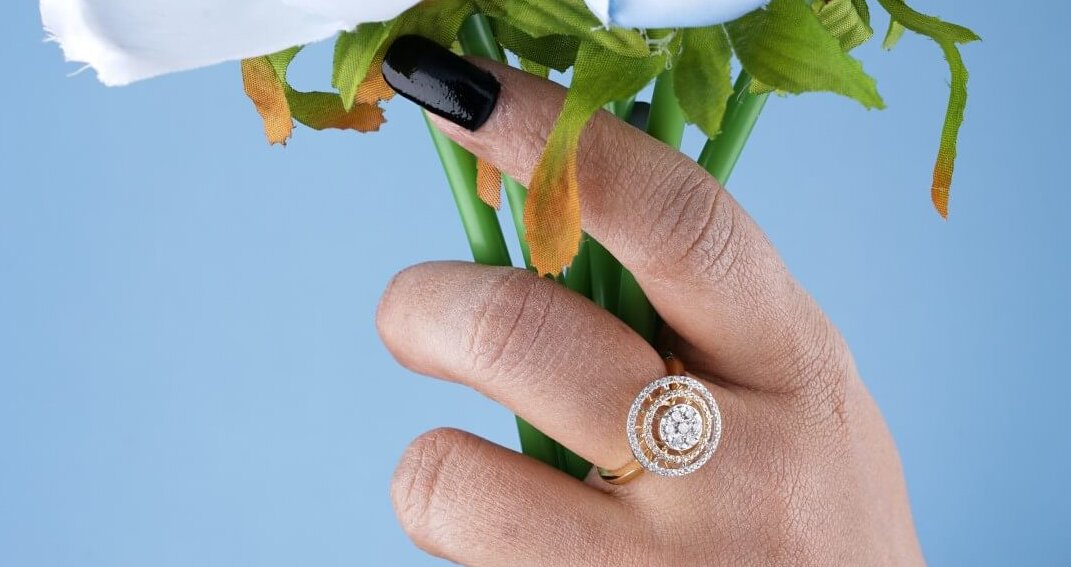
Record-Breaking Ring Sales
The Story of the ‘Pink Star’
The pink star is, so far as we know, the most expensive diamond ring ever sold. It was traded for $71.2 million.
The ring featured an IF (Internally Flawless) Fancy Vivid Pink diamond weighing 59.60 carats. In the world of fancy color diamonds, pink represents one of the rarest colors, and is highly coveted for the romantic, feminine vibe it lends to diamonds.
Still, most shoppers continue to focus their searches on the classic and versatile colorless diamond, rather than the fancy colors.
Choosing the Right Diamond Quality
Popular Color Grades
The Most Popular Diamond Color Grades are G and H.
It makes sense that shoppers stick to the higher end of the Near Colorless group. While they know that there’s far better value to be found in the Near Colorless category, the safest bet will always be G and H. Still, both I and J color diamonds are only 1% behind D color diamonds in terms of popularity, which just goes to show how compelling the argument for perfectly imperfect diamonds really is.
Balancing Clarity with Budget
VS2 and SI1 are the Most Popular Clarity Grades…
Together, they comprise more than 40% of all diamonds purchased for engagement rings – despite the fact that they are more than halfway down the clarity scale.
This is a great sign that shoppers are doing their research before committing to an expensive diamond that, in reality, isn’t worth the cost. VS and SI diamonds all feature inclusions – most of which are clearly illustrated in the diamonds’ GIA reports – but there’s a very good chance you won’t be able to spot them without powerful magnification.
The Pull of Perfection
Around 10% of Engagement Rings Sold Feature FL or IF Diamonds
Whether this is simply because some shoppers can’t shake their fascination with the rarity and prestige of internally flawless diamonds, or simply the result of an almost unlimited budget, IF diamonds are not totally overlooked in the world of engagement rings. Still, whatever amount of money you have to spend on a ring, we’d always recommend you re-evaluate your priorities away from the high and unnecessary cost of an IF (or even a VVS) diamond.
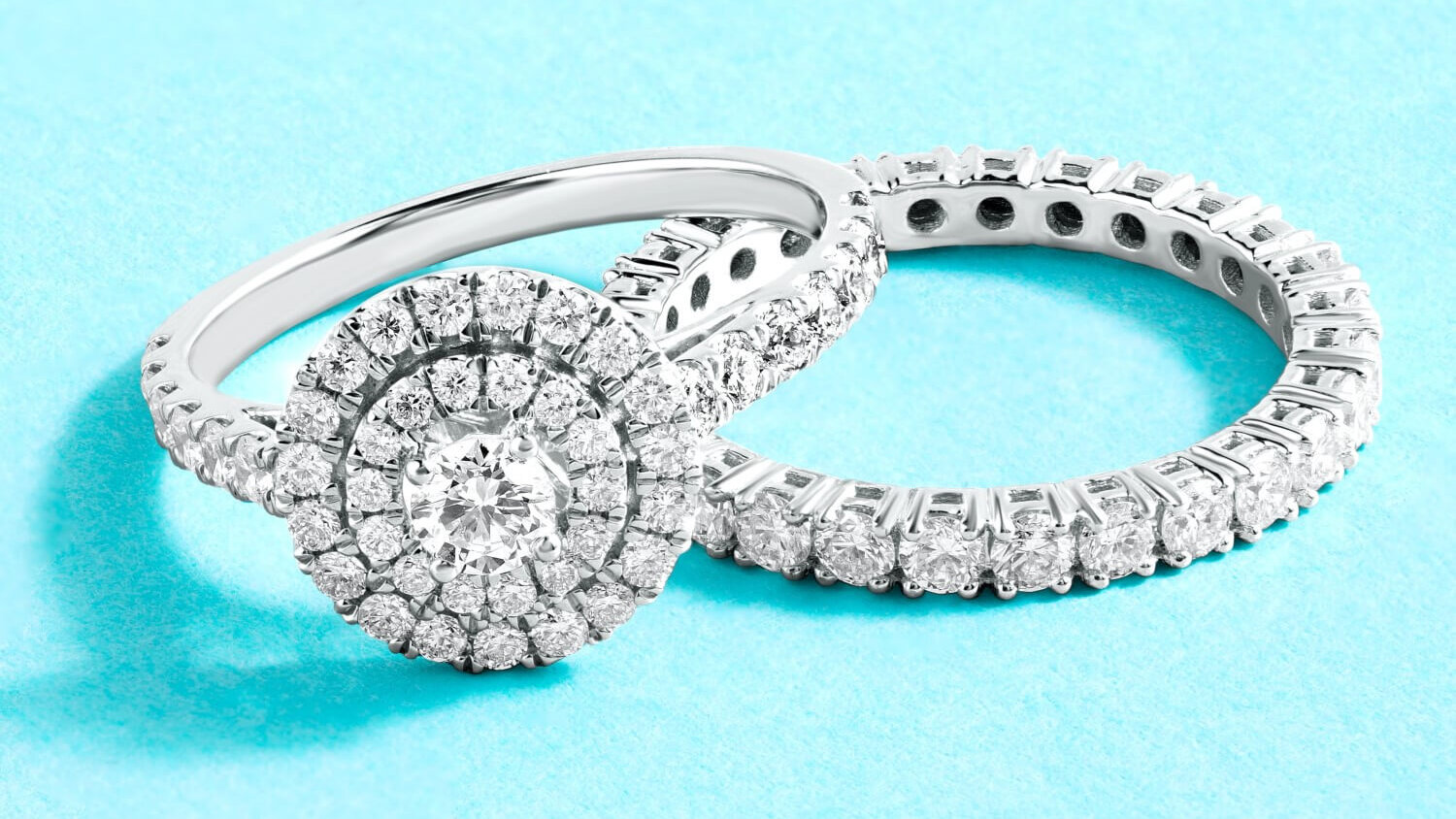
The Allure of Diamond Shapes
As we said before, shape is the first thing that anyone will notice, as well as size. A diamond’s shape can totally transform even the simplest ring design. Consider the difference between a soft and romantic Oval solitaire, and the edgier, more unusual Marquise, for instance.
Here’s what everyone else is buying:
The Reign of the Round Brilliant
The design of Round Brilliant diamonds that we know and love today was finalized in the early 1920s, although Round diamonds had been around for a long, long time before that.
The Round Brilliant has represented the most popular choice pretty much from that point onward. Until some other shapes, which tend to come in and out of style every few years or generations, the Round Brilliant has been a classic for over a century. Its popularity likely stems from its versatile and timeless silhouette but, most importantly the fact that it sparkles more than any other shape.
Lesser-Known Shapes: Heart & Marquise
Both represent around 2% of diamond engagement rings sold in the US.
The Heart cut is a tricky customer. For starters, it’s difficult to get perfect, which means that it’s all too easy for these diamonds to wind up looking too wide, too long, narrow, or asymmetrical. In the US, it’s also seen as more of a ‘gimmick’. Other shapes like the Round, Oval, and Emerald feature very basic shapes, whereas the Heart’s obvious romantic connotations are less likely to withstand the test of time – or even a single trend cycle.
The Marquise cut has a great story behind it, and it’s a lot more versatile than the Heart. It often loses out to the Oval or Pear cuts, however, since both offer a similar shape without those two vulnerable points at either end, but it’s currently seeing a resurgence of interest from modern brides and grooms.
Origin and Ethical Sourcing
It’s a great sign that more and more shoppers are actively pursuing information about the origins of the diamonds they look at – and that more and more jewelry stores are practicing full transparency around their sourcing methods. With diamonds originating from so many different countries around the world, it’s vital we understand the path ours followed to reach us.
The Largest Producer of Rough Diamond
This one goes to Russia. The country currently has 12 open pit mines. The overwhelming majority of Russia’s mining efforts are overseen by the mining group ALROSA, which ensures high standards are met for safety, wellbeing, pay, and efforts to minimize their impact on the environment. You can read more about Russian diamonds here.
The Largest Producer in Africa
Botswana.
The country is rich in natural deposits, and, as of 2020, had exported approximately 310 million carats’ worth of diamond. This makes it the second-largest producer of natural diamond in the world, and a major hub for the global industry, given how many diamonds are sorted there.
Thanks to a highly successful collaborative approach from the Botswanan government and the De Beers mining group, Botswana’s diamond industry has been able to go from strength to strength over the years. From the mining operations themselves to a major sorting facility operated by De Beers, the industry creates livelihoods for countless men and women across the country.
The Kimberley Process and its Impact on Ethical Diamonds
Since its Introduction, The Kimberley Process has Ended the Production of More than 99% of Blood Diamonds
Since 2003, countries across the world have been united against the issue of diamonds mined and sold to fund rebellion movements and bloody conflict. While, a few decades ago, the industry was being overwhelmed by the relentless flow of diamonds mined in these conditions, it is now thought to have been minimized to represent just 0.2% of diamonds mined today.
It’s also easier than ever for jewelers and vendors to ensure the safe and ethical origins of their diamonds and, as a result, for shoppers to have faith in the industry.
You can read our full guide to the Kimberley Process to find out more.
Proposal Planning Insights
It’s not all about the diamond – although we’re pretty confident it’s mostly about the diamond. Here are the latest stats on the proposals themselves, in case you were fixating too much on the ring, and not enough on the moment itself…
The Most Popular Month for Getting Engaged
December!
Whether it’s the romance of the holiday season, or just a great way to usher in a brand new year – and a brand new stage of your journey together, more Americans are popping the question (and saying yes) than in any other month of the year.
The Most Popular Place to Get Engaged
Some Estimates State that One in Every 500 Proposals Takes Place at Disneyland
If there was ever a way to make the most magical place on earth that bit more special, we’re guessing a sparkling diamond would clinch the deal for most people. The good thing is that, for the right person, Disneyland proposals will never get old. From getting the dreamy shot in front of Cinderella’s castle, to doing it in front of the entire cast of Fantasia, there are plenty of options for any soon-to-be bride or groom.
How Long We Spend Planning Our Proposals
In 2017, The Knot found that, on average, it takes 4.4 months to plan a proposal, and understanding the best time to buy an engagement ring could save you significantly.
Whether that sounds like a dauntingly long time to you, or nothing more than the blink of an eye will depend on the type of person you are. We’re all for a spontaneous, words-before-thoughts kind of proposal – particularly if you’re lucky enough to have the ring to hand – but, at the same time, we’re always eager to hear every little detail of a perfectly engineered moment.
The Controversy of a Valentine’s Proposal
Men are More Likely to be Impressed by Valentine’s Day Proposals than Women
So, if we’re going with the general consensus, that’s a ‘No’ to Heart-shaped diamond rings, and a pretty tepid response to a proposal on the most romantic day of the year. In other words, unless you know your partner well enough to take the plunge, let the romance of a proposal speak for itself, and avoid any gimmicks or overly-obvious choices.
Life – and particularly love – isn’t all about keeping up with the Joneses, but we can certainly see a lot of value in knowing what numbers define the industry, what the general expectations are, and what sort of path you can expect to take as you move from planning to popping the question. Keep these facts and statistics in mind while you continue your search for an engagement ring.
9 FAQs
- Q: What is the average cost of an engagement ring in the US?
- A: The average cost hovers around $6,000, but it varies depending on personal budgets and preferences.
- Q: How big is the average diamond size for engagement rings in the US?
- A: The average size is about 1 carat, though this can vary based on individual taste and budget.
- Q: What are the most popular diamond color and clarity grades for engagement rings?
- A: G and H color grades and VS2 and SI1 clarity grades are popular, offering a good balance of quality and value.
- Q: Which diamond shape is the most popular for engagement rings?
- A: The Round Brilliant cut is the most popular due to its timeless look and exceptional sparkle.
- Q: Does a larger carat weight always mean a better ring?
- A: Not necessarily. Larger diamonds are more expensive, and sometimes a smaller diamond with higher quality can be more appealing.
- Q: Are trends important when choosing an engagement ring?
- A: While trends provide insight, personal preference and timeless styles are equally important.
- Q: Is ethical sourcing important for engagement rings?
- A: Yes, considering ethical sourcing and sustainability, like choosing conflict-free diamonds certified under the Kimberley Process, is increasingly important for many buyers.
- Q: Should the “three months’ salary” rule still apply when buying an engagement ring?
- A: This rule is outdated. It’s more important to set a budget based on personal financial situations rather than adhering to this standard.
- Q: Can engagement ring styles impact the perceived size of the diamond?
- A: Yes, certain ring styles and settings can make the diamond appear larger or more prominent.
Jeweler AI analyze current statistics and trends to help you choose the best engagement ring, tailored just for you. Start Now!
FOLLOW-UP GUIDE SERIES





